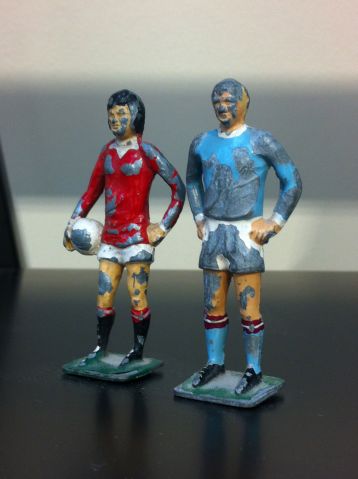The fabric/circle of life …
I’m back to painting the embroidery hoops – well, perfecting them to be precise, touching up those last minute missed bits, working indoors these past mornings where it’s a little cooler, shielding myself from the heat in the garden studio. I’ve been working from my late Nana’s table which feels very apt as I continue with this body of work that’s dedicated to her, in love and remembrance.
I can’t help thinking about the embroidery hoops as metaphors of the circle of life; I’m thinking about the numerous times I’ve been seated round this table in the past – with my Nana and with many other members of my extended family, so many of them no longer with us. But the table is – still here, with me now, as part of the next generation – the eternal cycle of life.
So, all twenty five hoops are now almost painted and ready. In the meantime, I’ve gathered together fabrics for this latest configuration of the ‘Fabric of Life’ which captures moments of my late Nana’s life – every piece sparks a memory of her: the mother of six children, widowed young and just about ‘getting by’ on a modest income – a proud woman who liked to keep herself and her children ‘looking respectable’ as she would say. The fabrics capture the essence of their time, materials from as early as 1920, through to 2010. There are many thoughts and feelings associated with the fabrics – happy memories of helping my Nana around the house – pegging out clothes, for example, swamped in an oversized apron myself, which she insisted I wear to keep my clothes clean.

On Wednesday, I made a site visit to where the hoops are going to be installed. It’s going to a challenging install but with help (and sufficient time) I’ll get there! I sense already that the venue manager and staff are experienced, positive and receptive to artists using their space. That’s not always the case, so it feels like a good start.
The work I’m going to be installing is 20/25. I’ll be suspending twenty fabric hoops, gathered from my Nana’s long-lived life and then inviting people who live in or have a current (or past) association with Deptford to bring a swatch of their own fabric to create an alternative installation, celebrating all that Deptford encompasses, with its diverse social and cultural history.
I am hoping to fill twenty five hoops, gathered from the Deptford community. You never know how participatory work will pan out and relying on an audience can be a bit nerve-wracking at times but I’ve experienced this many times before with my 10×10 project.
And so, I’ll be sitting tight, hoping for the best, hoping that the fabric swatches appear and even better, just like in 10×10, that people are happy and willing to share the stories behind them.






